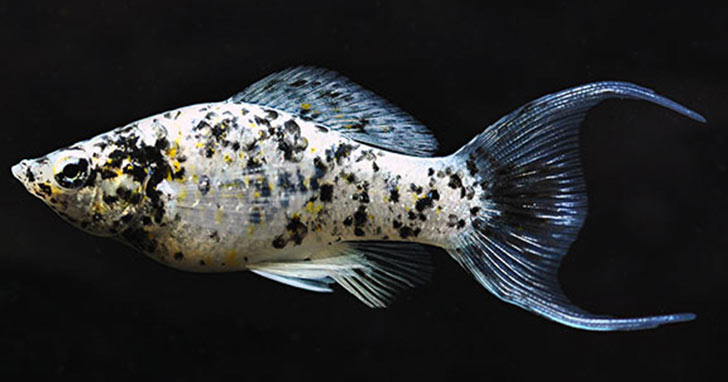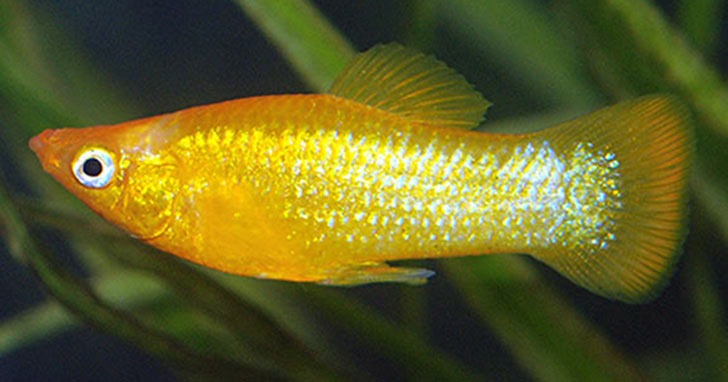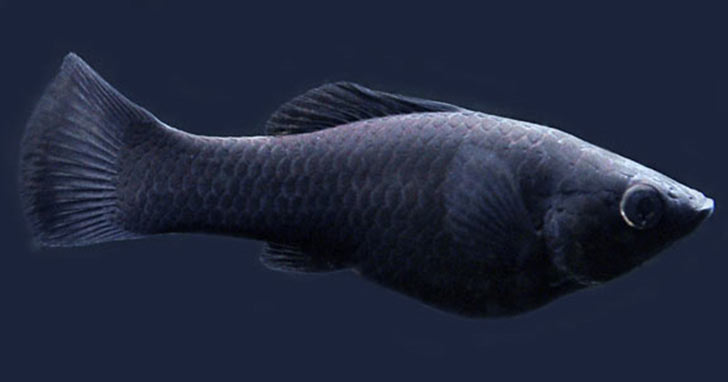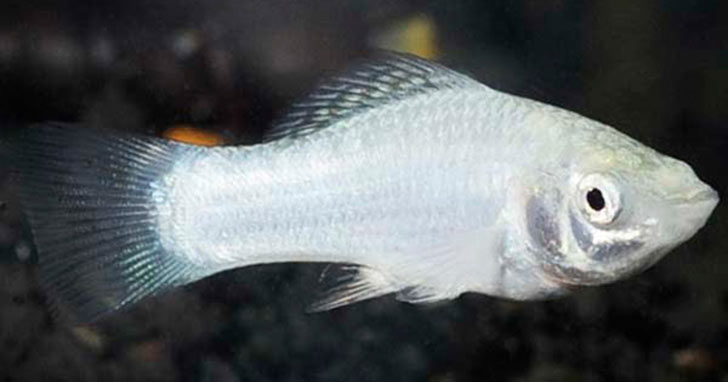Mollies: Dynamic additions to your aquarium
What are Mollies? Low maintenance, a wide selection of varieties to choose from, and an absolute staple of freshwater fishkeeping, Mollies are absolute favorites, both among veterans and beginners to the aquarium trade! Poeciliidae are considered to be the same genus as the guppy. Mollies have been interbred with guppies due to this over the years, and their close relationship has been confirmed genetically. Additionally, all captive Molly species have been interbred over centuries, resulting in a myriad of colorations as well as fin shapes. While solid black Mollies with orange-bordered dorsal fins are considered to be the most common, it is widely believed that no other fish quite matches up to the pure, velvety black shade that this Molly has. Venturing into other, less common species, you’ll find albino forms with red eyes, chocolate, gold dust and orange varieties, as well as true Lyretails among Mollies. Among Mollies, it’s rather easy to differentiate between the males and females. The males tend to have a smaller, pointier anal fin, while the females have a more elaborate, broad, and fanned one. With over 39 different varieties to choose from, aquarists will never find themselves bored when choosing Mollies for their aquarium.
Tank conditions for Mollies Mollies rarely grow bigger than 4.5 inches, and in the case of Sailfish they get a tad bit bigger, to around 6 inches at most. A minimum size of 30 gallons is adequate when it comes to Mollies, as these small fish don’t take up too much space. Most Mollies are widely distributed in freshwater, although there are cases where they’re found in brackish water and sometimes even in the open ocean for short periods. As such, Mollies are adaptable and can handle most water conditions. For optimum results, keep your Mollies in water with a temperature ranging around 72 to 78 degrees Fahrenheit, with pH levels between 7.5 to 8.5.
Tankmates for Mollies Mollies are peaceful and easygoing, getting along with pretty much any other similarly sized, peaceful species. Keep at least four Mollies together, as these are schooling fish and require the company of their own to be happy and stress-free. It is also prudent to ensure that the number of females outnumber that of the males, as males have a tendency to harass females, and this behavior unfortunately causes tension and stress in females, leading to other problems. As far as tankmates go, avoid species who exhibit aggression towards other fish, especially larger fish who would harass the smaller mollies and sometimes even attempt to eat them. Barbs, tetras, catfish and the like make for excellent tankmates for the dynamic molly. What do Mollies eat? Mollies are loud and proud omnivores for the most part, although they do enjoy a vegetarian diet as well. They make a habit of snacking on algae on a frequent basis. Blanched veggies like lettuce, spinach and zucchini are favorites among mollies. Algae-based flake food, along with freeze-dried bloodworm, tubifex and brine shrimp will keep your mollies happy.
|
||||||||
|
|






